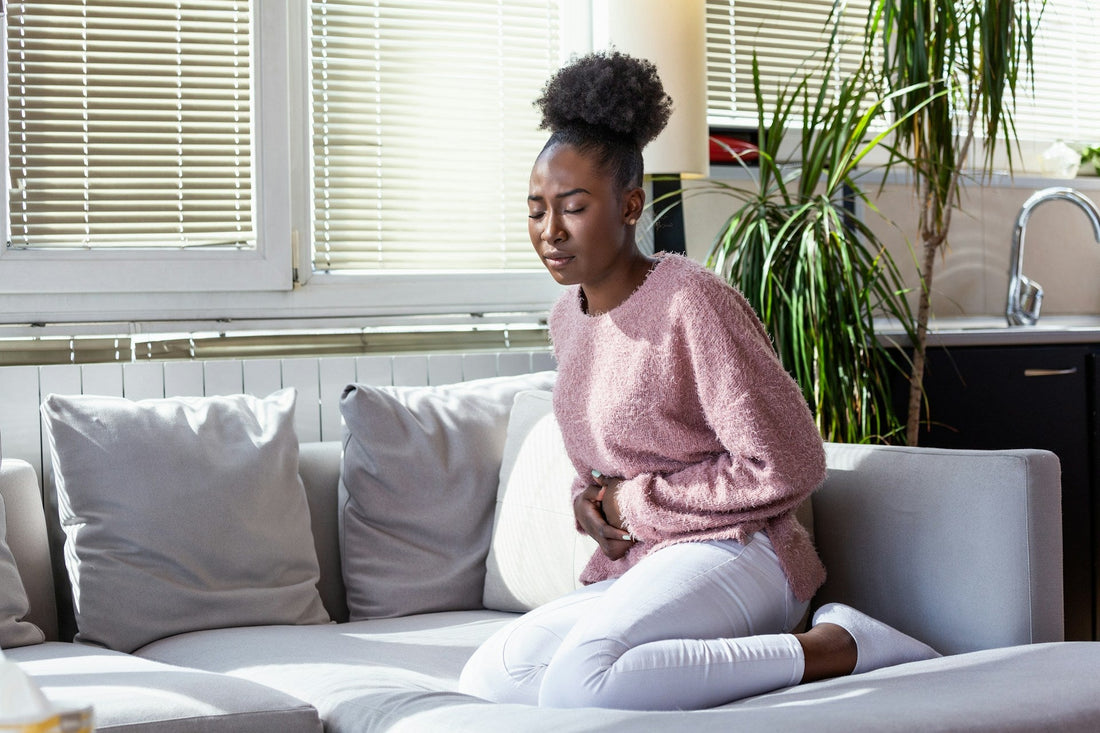
Can Hemorrhoids Cause Painful Urination? Understanding the Connection and Symptoms
Share
Experiencing painful urination can be distressing, and you may wonder if it could be linked to hemorrhoids. Hemorrhoids can indeed cause symptoms that lead to painful urination, particularly due to inflammation and discomfort in the pelvic area. This connection can occur when swollen hemorrhoids irritate surrounding tissues, including the urethra, affecting urination.
Many individuals are unaware that such complications can arise from hemorrhoids, which are swollen veins in the lower rectum and anus. If you find yourself struggling with these symptoms, it’s essential to address the issue. Seeking effective solutions, like those offered by Hem Healer, can help alleviate the discomfort associated with hemorrhoids, promoting a more comfortable experience when urinating.
Choosing the right treatment is crucial for your well-being. Hem Healer provides a 100% natural blend of botanical herbs designed to reduce pain, swelling, and bleeding from hemorrhoids. This supplement effectively supports both men and women, helping you regain comfort and confidence in your daily life.
Understanding Hemorrhoids
Hemorrhoids are swollen veins in the anal area that can lead to various complications, including pain during bowel movements and potential discomfort during urination. Understanding their anatomy, types, and causes can help you manage symptoms effectively.
Anatomy of Hemorrhoids
Hemorrhoids develop from the network of blood vessels around the rectum and anus. These veins can become swollen due to increased pressure, leading to various forms of hemorrhoids. The anal area contains internal hemorrhoids, which are located within the rectum, and external hemorrhoids, which form outside the anus. In some cases, internal hemorrhoids may protrude through the anus, known as prolapsed hemorrhoids.
When hemorrhoids are inflamed or thrombosed, they can cause significant discomfort. A thrombosed external hemorrhoid occurs when a blood clot forms within the swollen vein, leading to severe pain and swelling. This anatomy is crucial for understanding the symptoms you may experience.
Types of Hemorrhoids
There are primarily two types of hemorrhoids: internal and external. Internal hemorrhoids are usually painless and may cause rectal bleeding, especially during bowel movements. These can be classified into degrees based on their prolapse, with higher degrees indicating more severe symptoms.
External hemorrhoids, on the other hand, can be painful and uncomfortable. They are located under the skin around the anus and may cause itching, swelling, and difficulty during bowel movements. Recognizing the type you may be experiencing can guide treatment options.
Causes of Hemorrhoids
Several factors contribute to the development of hemorrhoids. Straining during bowel movements due to constipation is a common cause. Low fiber intake can exacerbate this problem, making stools hard and difficult to pass.
Other contributing factors include pregnancy, obesity, and prolonged sitting. Increased pressure on the pelvic region can lead to swollen veins. Using a natural supplement like Hem Healer can help reduce pain and swelling. This product contains a blend of botanical herbs that works effectively for both men and women.
By addressing lifestyle factors and considering effective treatments, you can better manage your symptoms and improve your quality of life.
Symptoms and Complications
When dealing with hemorrhoids, it's essential to identify the symptoms and understand the potential complications that can arise. Recognizing the correct signs can lead to timely intervention and better management of the condition.
Recognizing Hemorrhoid Symptoms
Common symptoms of hemorrhoids include discomfort, rectal bleeding, and itchiness. You may notice bleeding during bowel movements, which can appear bright red on toilet paper or in the stool. External hemorrhoids often lead to pain and discomfort, especially when sitting or during bowel movements.
In addition to bleeding and pain, some individuals may experience fecal incontinence, which is the inability to control bowel movements. This can occur if swelling in the anal area presses on the rectum. Anal fissures, which are small tears in the anal lining, can occur alongside hemorrhoids, exacerbating pain and discomfort.
For relief, consider using Hem Healer, a 100% natural blend of botanical herbs that reduces pain, swelling, and bleeding.
Complications Arising from Hemorrhoids
Ignoring hemorrhoid symptoms can lead to complications. Thrombosed hemorrhoids occur when a blood clot forms, leading to intense pain and swelling. This may require surgical intervention if the pain is severe.
Infections can also arise when hemorrhoids become inflamed, causing further complications. Prolapsed hemorrhoids may stretch beyond the anal opening, resulting in bleeding and irritation that could worsen over time.
Using Hem Healer can help manage these symptoms effectively, reducing the duration and severity of hemorrhoids. It’s crucial to address complications promptly to avoid more serious health issues.
Hemorrhoids and Urinary Complications
Hemorrhoids can lead to various urinary complications that may affect your bladder function and overall comfort. Understanding these associations is crucial for managing symptoms effectively.
Urinary Issues Associated with Hemorrhoids
Hemorrhoids can influence urination by causing discomfort in the pelvic region. The inflammation and swelling from hemorrhoids can lead to sensations of pain or urgency while urinating.
You might experience urinary retention, where you feel the urge but are unable to fully empty the bladder. This may happen due to the pressure hemorrhoids exert on nearby structures. Women are particularly susceptible due to anatomical differences, which can make pelvic discomfort more pronounced.
Effective management may require medical attention to address both hemorrhoids and any urinary problems. Treatments like those offered by Hem Healer can support your recovery. This natural supplement contains a blend of botanical herbs designed to reduce swelling and pain associated with hemorrhoids.
Urinary Tract Infections and Hemorrhoids
The presence of hemorrhoids can mimic or exacerbate the symptoms of urinary tract infections (UTIs). Pain or discomfort in the pelvic area may overlap, leading to confusion about the underlying cause.
If hemorrhoids irritate the urethra, you might notice increased urinary urgency. This can lead to frequent bathroom trips, often mistaken for a bladder infection. Diagnosis is crucial, as treating a UTI requires specific antibiotics.
Preventive measures include maintaining proper hygiene and staying well-hydrated. If you're dealing with both conditions, seeking advice from a healthcare professional is essential. Natural solutions like Hem Healer may alleviate hemorrhoid pain and help restore comfort.
Pelvic Floor Dysfunction
Pelvic floor dysfunction can arise when hemorrhoids impact pelvic muscles, leading to difficulties in bladder control. The pelvic floor muscles support the bladder and play a vital role in urinary function.
When swollen hemorrhoids create additional pressure, you may experience urinary incontinence or urgency. Strengthening your pelvic floor muscles through exercises can help improve control and reduce symptoms.
Consulting with a healthcare provider or pelvic floor specialist can guide effective treatment strategies. Incorporating supplements like Hem Healer may provide relief by addressing hemorrhoids, allowing your pelvic muscles to function more smoothly.
Diagnosis and Treatment Options
Understanding how hemorrhoids contribute to painful urination involves accurate diagnosis and a comprehensive treatment plan. It is crucial to identify the severity of your condition and manage it effectively through various options.
Medical Diagnosis for Hemorrhoids
To diagnose hemorrhoids, a healthcare provider will start with a detailed medical history and physical examination. They may perform a digital rectal exam to check for abnormalities. In some cases, a visual inspection of the anal area is necessary. If there are indications of complications or other conditions, procedures like a colonoscopy or flexible sigmoidoscopy might be recommended to rule out serious issues.
Typical risk factors for hemorrhoids include prolonged sitting, straining during bowel movements, or a low-fiber diet. Identifying these factors can help tailor an effective treatment plan.
Conservative and Medical Treatments
Initial treatment often involves conservative measures aimed at relieving symptoms and promoting healing. You might consider over-the-counter creams and suppositories that soothe pain and reduce inflammation. Warm sitz baths can effectively alleviate discomfort after bowel movements.
In addition, lifestyle changes such as increasing fiber intake through foods or supplements, like Hem Healer, can help soften stools and ease symptoms. Hem Healer offers a 100% natural blend of botanical herbs that work to reduce pain, swelling, and bleeding associated with hemorrhoids.
For more persistent cases, stool softeners may be prescribed to prevent straining during bowel movements.
Surgical Interventions
If conservative treatments fail, surgical options may be necessary. Hemorrhoidectomy is a common procedure that removes inflamed tissue. This option is usually reserved for severe cases where hemorrhoids cause significant pain or recurrent bleeding.
Other surgical interventions include rubber band ligation, where hemorrhoids are tied off to cut off blood supply, eventually causing them to shrink. These approaches can be very effective in alleviating symptoms and may be considered when other treatments do not provide relief.
Selecting the right treatment approach is essential to managing hemorrhoids and minimizing painful urination. Always consult with a healthcare provider to determine the most suitable strategy for your needs.
Lifestyle and Prevention
Making specific lifestyle changes can significantly help prevent hemorrhoids and painful urination. Incorporating certain dietary habits, engaging in regular physical activity, and maintaining proper bowel management are crucial steps.
Diet and Hydration
A high-fiber diet is essential for promoting healthy bowel movements and preventing constipation, which can exacerbate hemorrhoids. Include plenty of fruits, vegetables, whole grains, and legumes in your meals. Aim for at least 25-30 grams of fiber daily.
Adequate hydration also plays a key role. Aim to drink at least 8-10 cups of water daily. Proper fluid intake helps soften stools, making them easier to pass and reducing strain. This can alleviate the risks associated with both dehydration and chronic constipation, which can lead to painful bowel movements and urinary issues.
Exercise and Body Weight Management
Regular physical activity helps to keep your weight in check and improve bowel functions. Activities such as walking, cycling, and swimming can enhance circulation in the rectal area and reduce pressure on the veins.
Strive for at least 150 minutes of moderate exercise per week. Maintaining a healthy body weight is also important, as obesity increases your risk of developing hemorrhoids. Making these changes can positively impact your overall health and reduce discomfort during urination.
Bowel Management Strategies
Proper bowel habits can prevent straining and promote regularity. Establish a routine by dedicating time for bathroom visits, ideally after meals when your body is naturally inclined to eliminate waste.
Avoid holding in bowel movements as this can lead to constipation. If you experience chronic diarrhea, consult a healthcare professional to address the underlying causes. Additionally, consider supplements like Hem Healer. This 100% natural blend of botanical herbs can help reduce pain and swelling caused by hemorrhoids. By managing your bowel health, you can alleviate discomfort and prevent further complications.

